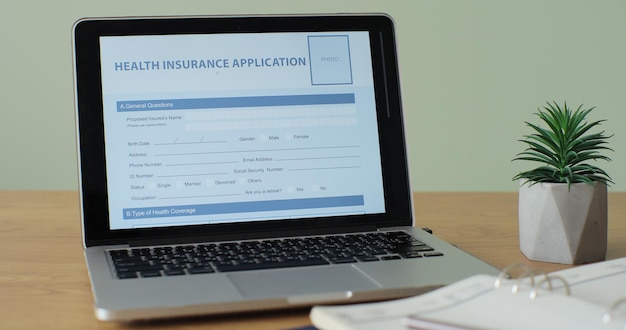Employee Life Insurance: Your Complete Policy Guide

Employee life insurance offers financial protection to your beneficiaries if you pass away while employed, typically at no cost to you, making it a valuable component of your benefits package.
Navigating the complexities of employee benefits can be daunting. Let’s delve into employee life insurance policy to give you a clear understanding of how it works and how it can protect your loved ones.
What is Employee Life Insurance?
Employee life insurance is a group life insurance policy offered by employers as part of their benefits package. It provides a death benefit to your beneficiaries if you die while employed by the company. This coverage helps ease the financial burden on your family during a difficult time.
Generally, it is offered as a basic life insurance plan, and it could be supplemented with additional voluntary coverage.

Key Features of Employee Life Insurance
Employee life insurance policies often include some standard features that define their scope and limitations.
- Basic Coverage: Typically a multiple of your salary (e.g., 1x, 2x your annual salary).
- Guaranteed Issue: No medical exam required for basic coverage.
- Portability: Some policies allow you to continue coverage if you leave the company, but often at a higher premium.
- Accelerated Death Benefit: Allows you to access a portion of the death benefit if you become terminally ill.
Employee life insurance provides important protection, but it’s crucial to understand its terms and limitations.
Types of Employee Life Insurance Policies
Employee life insurance comes in different forms, each offering unique benefits and limitations.
Understanding these differences is crucial for choosing the right coverage.
Basic Life Insurance
This is usually offered as a standard part of an employee’s benefits package, and is typically offered at no cost to the employee. The coverage amount is often a multiple of the employee’s salary.
Supplemental Life Insurance
Employees can purchase additional coverage beyond the basic policy, which provides extra financial protection for their families. This voluntary coverage requires the employee to pay premiums, which are often deducted from their paycheck.
Accidental Death and Dismemberment (AD&D) Insurance
AD&D provides benefits if death or dismemberment occurs due to an accident, offering an additional layer of financial security. It can be included as part of a life insurance policy or offered as a separate benefit.
Choosing the right type of employee life insurance depends on your individual circumstances and financial goals, so check with your company’s HR department for details.
Understanding Your Coverage Amount
Determining the right coverage amount is crucial to ensure your family is adequately protected in the event of your death.
Several factors should influence your decision.
Factors to Consider
Several factors determine the amount of coverage you require. Consider your debts, mortgage, future education costs for your children, and ongoing living expenses. This assessment helps you arrive at a coverage amount that adequately supports your family’s needs.
Calculating Your Needs
Calculating your life insurance needs involves estimating the financial resources your family would require if you were no longer around. This includes immediate expenses like funeral costs, ongoing expenses like housing, food, and healthcare, and future expenses like college tuition. Online calculators and financial advisors can help you determine the appropriate coverage level.
Choosing the correct coverage amount requires a thorough evaluation of your financial situation and your family’s financial needs when you are not around.
Beneficiary Designations: Who Receives the Benefits?
Choosing your beneficiaries is one of the most important actions in setting up your employee life insurance policy. Beneficiaries are the people or entities who will receive the death benefit from your life insurance policy.
- Primary Beneficiary: The first person or entity to receive life insurance benefits.
- Contingent Beneficiary Receives benefits if the primary beneficiary is also deceased.
How to Choose and Update Beneficiaries
Carefully consider who you want to protect financially, and list them as beneficiaries. Common choices include spouses, children, and other close family members. Keep your designations up to date, particularly after life events like marriage, divorce, or the birth of a child.
Common Mistakes to Avoid
Avoid common errors like failing to designate a beneficiary, listing outdated information, or not informing your beneficiaries about the policy. Regularly review your policy and beneficiary designations to ensure they align with your current wishes.
Selecting and maintaining your beneficiaries properly ensures that your life insurance benefits reach the intended recipients efficiently, providing financial support when it’s most needed.
Portability and Continuation of Coverage
Understanding the portability and continuation options of your employee life insurance is essential, especially if you leave your job.
Portability allows you to carry the coverage with you.
- Portability: Allows you to continue your coverage but you typically pay directly to the insurance provider. Premiums are often higher than what you paid as an employee.
- Conversion: Allows you to can convert your group life insurance policy into an individual policy. The premiums will likely be higher.
- Terminating Coverage: Coverage ends once you are no longer employed.
Check with your HR department to understand how your specific policy works.
Tax Implications of Employee Life Insurance
Understanding the tax implications of employee life insurance is crucial for beneficiaries and employees alike, helping to avoid surprises during tax season. Generally, life insurance benefits are not taxed.
Most benefits paid out are excluded from gross income.
- Tax-Free Death Benefit: Generally, the death benefit paid to beneficiaries is not subject to income tax.
- Premium Payments: Employer-paid premiums for coverage above $50,000 are considered taxable income.
While life insurance benefits are typically tax-free, it’s important to stay informed to ensure compliance.
| Key Point | Brief Description |
|---|---|
| ✅ Coverage Types | Basic, Supplemental, and AD&D options available. |
| 💰 Coverage Amount | Calculate based on debts, education, and living expenses. |
| 👪 Beneficiaries | Choose primary and contingent beneficiaries wisely. |
| 💼 Portability | Know your options when leaving your job. |
FAQ
▼
Basic life insurance is typically provided by the employer at no cost to the employee, whereas supplemental life insurance is additional coverage that employees can purchase, often through payroll deductions.
▼
Consider your outstanding debts, mortgage, future education costs for your children, and ongoing living expenses. Summing these future costs will help you find an appropriate number for your policy.
▼
Some employee life insurance policies offer portability, allowing you to continue coverage after leaving your job. This typically involves paying premiums directly to the insurance provider.
▼
Generally, the death benefit paid to beneficiaries is not subject to income tax. However, employer-paid premiums for coverage above $50,000 are considered taxable income for the employee.
▼
You should review your beneficiary designations at least annually and after major life events such as marriage, divorce, birth of a child, or death of a beneficiary to ensure they align with your current wishes.
Conclusion
Understanding your employee life insurance policy is a crucial element of financial planning. Take time to review your coverage, beneficiary designations, and portability options to ensure your loved ones are protected. Remember to consult with HR or a financial advisor if you have any questions.





